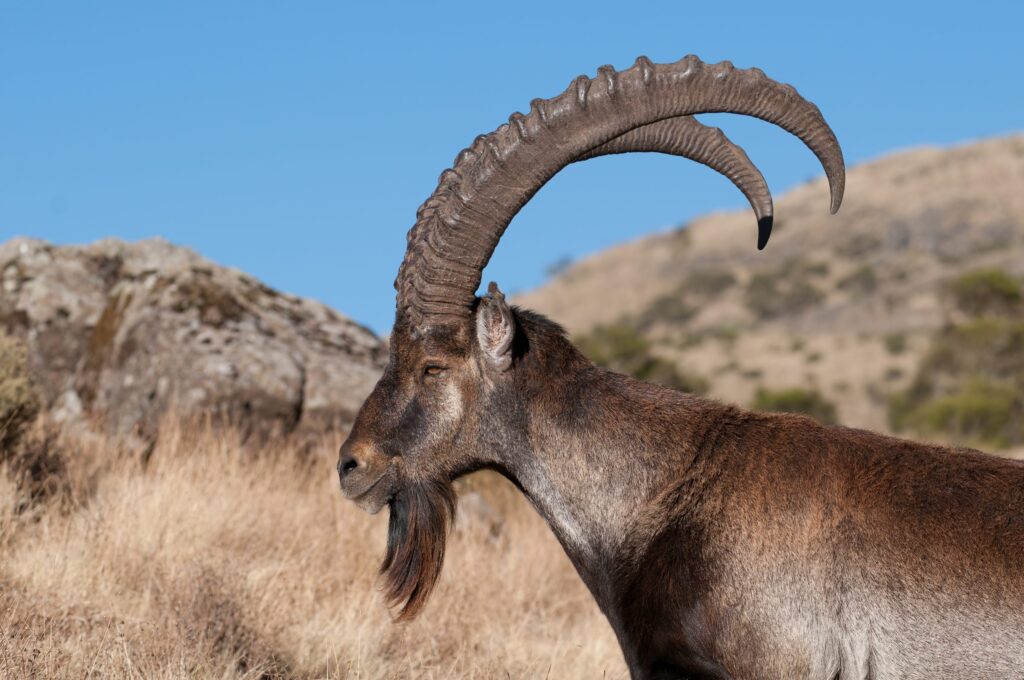
Here’s the answer to the question:
Answer:
The Alpine Ibex (Capra ibex) has several key adaptations that help it survive in its mountainous habitat, including:
- Strong, cloven hooves with rough pads that provide excellent grip on rocky and steep terrain, allowing it to climb and move easily on cliffs.
- Muscular build and agility that enable it to leap and navigate difficult slopes to escape predators and find food.
- Thick fur coat that protects it from cold temperatures at high altitudes.
- Large, curved horns used for defense and dominance displays during mating season.
The Alpine Ibex (Capra ibex) is a species of wild goat that lives in the European Alps. Here are some key facts about it:
Description
- Appearance: The Alpine Ibex is known for its sturdy body and large, backward-curving horns. Males have much larger and more curved horns than females.
- Size: Males can weigh between 65 to 100 kg (143 to 220 lbs), while females are smaller, usually around 40 to 50 kg (88 to 110 lbs).
- Coat: Their fur is generally brownish-gray, becoming lighter in winter.
Habitat
- Found mainly in the rocky, mountainous areas of the Alps.
- They prefer steep, rugged terrain above the tree line where they can escape predators and find sparse vegetation.
Behavior
- Excellent climbers, able to scale steep and almost vertical cliffs.
- Mostly herbivorous, feeding on grasses, herbs, and shrubs.
- They live in herds; males and females usually form separate groups except during mating season.
Conservation
- Once hunted extensively and nearly extinct in the 19th century.
- Thanks to conservation efforts, their numbers have rebounded, and they are now a conservation success story.
Would you like to know about their behavior, conservation status, or something else about the Alpine Ibex?
The Alpine Ibex (Capra ibex) is a species of wild goat that lives in the European Alps. Here are some key facts about it:
Description
- Appearance: The Alpine Ibex is known for its sturdy body and large, backward-curving horns. Males have much larger and more curved horns than females.
- Size: Males can weigh between 65 to 100 kg (143 to 220 lbs), while females are smaller, usually around 40 to 50 kg (88 to 110 lbs).
- Coat: Their fur is generally brownish-gray, becoming lighter in winter.
Habitat
- Found mainly in the rocky, mountainous areas of the Alps.
- They prefer steep, rugged terrain above the tree line where they can escape predators and find sparse vegetation.
Behavior
- Excellent climbers, able to scale steep and almost vertical cliffs.
- Mostly herbivorous, feeding on grasses, herbs, and shrubs.
- They live in herds; males and females usually form separate groups except during mating season.
Conservation
- Once hunted extensively and nearly extinct in the 19th century.
- Thanks to conservation efforts, their numbers have rebounded, and they are now a conservation success story.
Would you like to know about their behavior, conservation status, or something else about the Alpine Ibex?